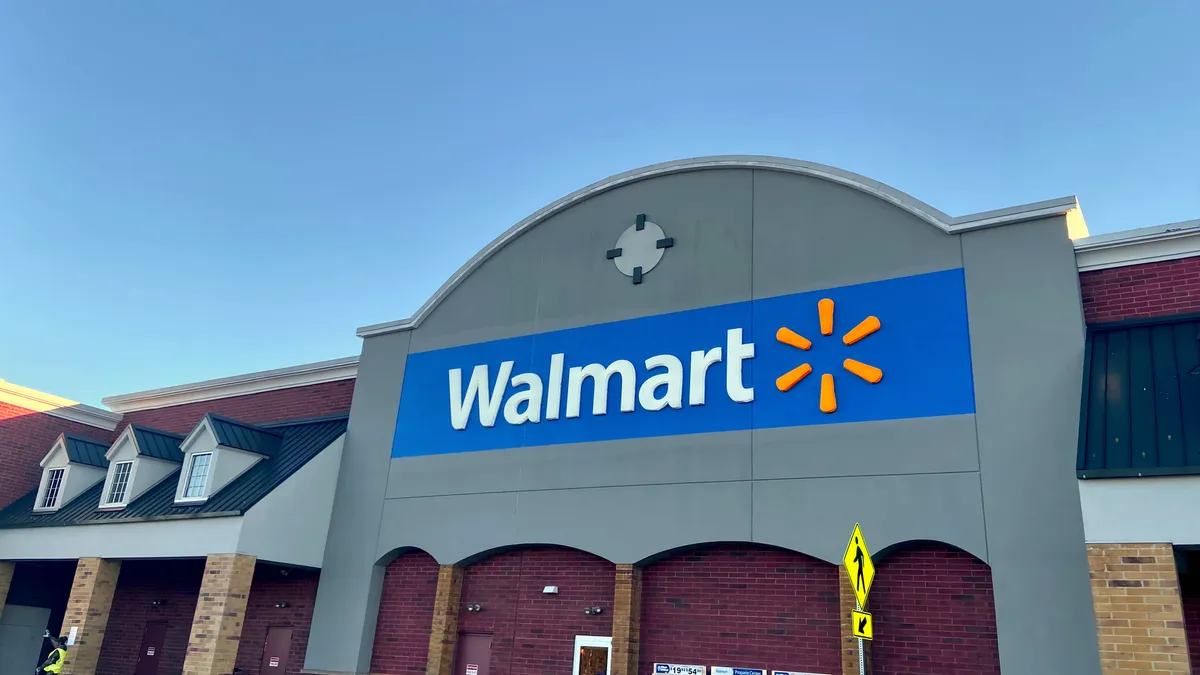With over 100,000 suppliers, the scale of Walmart’s supply chain is mind-boggling.
And so when the world’s largest retailer takes on a supply chain initiative, the results can have global ramifications. Moreover, it can set the pace for the entire industry.
On climate initiatives, that pace has been swift. In February, the company announced it had blown through its Project Gigaton goal of cutting 1 billion metric tons of greenhouse gas emissions from its supply chain — six years early.
Described as a “game changer” when Walmart first announced the goal — with an original deadline of 2030 — the retailer’s rapid progress is a major win for the climate. It can show just what is possible when companies within a supply chain work together toward a common good.
Walmart’s Gigaton work is instructive for the entire industry. The retailer leaned on its resources and size to provide suppliers with education, financing and various programs to help them set goals and get there.
“From our perspective, it's a long journey, and it's one we started in 2017,” Ron Voglewede, Walmart’s global director of sustainable retail, said in an interview. “It is really about building the expectation, raising the bar continuously over time and creating those on-ramps for companies to engage with us alongside and create the collective action.”
Supplier emission cuts: ‘Better for their business’
When it launched Gigaton, Walmart invited — rather than compelled — its suppliers to join the initiative and commit to reductions.
Since then, more than 5,900 suppliers have participated in the Project Gigaton effort, according to the company.
Crucial to getting suppliers on board was giving them access to tools and platforms, Voglewede said. Broadly, that includes three key incentives: education, financing and recognition.
Education can help suppliers see emission reductions can be “actually better for their business,” Voglewede said. “It makes them more efficient.”
The retailer identified key areas for reduction under the umbrella of scope 3, including energy, agriculture, waste, packaging, deforestation, and product use and design. Walmart also worked with organizations such as the World Wildlife Fund and Environmental Defense Fund to develop a toolkit for suppliers.
Walmart’s scale, sterling credit ratings and capital structure makes it easier to provide suppliers with some financial tools for meeting sustainability and scope 3 targets. That includes a sustainability-based supply chain finance program through HSBC, which can provide earlier payments for goods for those vendors that meet certain goals.
As another financial tool, Voglewede pointed to the Gigaton PPA program launched in 2020 to help Walmart’s supply base access renewable energy as instrumental and representative of how to bring major sustainability initiatives “to life.”
Through the program, a collaboration with Schneider Electric, suppliers could pool their resources and numbers to contract renewable energy purchases as well as get education on the renewable energy market and guidance on projects.
“Individually, it's hard to access renewable energy,” Voglewede said. So Walmart looked at how it “can we help bring together people within our supply chain to deliver renewable energy for them. That had a very large impact.”
As for recognizing for suppliers participating in Project Gigaton, it can give them a sense of “helping to be part of a much larger thing, and being part of a bigger thing is a big deal,” Voglewede said.
To do that, the retailer awards badges such as “Giga Guru” status for what it describes as “excellence in target setting, action and results.” Voglewede said suppliers have pulled him aside to tell him that they are proud of their listing under the program.
“It really energizes people and gives them a sense of hope, too,” he said. “And I think that's sorely needed in a discussion that sometimes gets very negative at times.”
‘A position of sustainability leadership’
Walmart has said it plans to keep Project Gigaton alive even though it hit its initial goal. The company is also “working really hard” to set a new scope 3 goal, according to Voglewede.
After announcing meeting its initial target, Walmart said it is improving its scope 3 estimates based on emerging standards and guidance while also looking at its value chain to determine the costs around various reduction opportunities. The company aims to have net-zero emissions in its own operations by 2040.
“Regardless of the external environment, it really is about better making a better more resilient supply base for all,” Voglewede said.
A retailer of Walmart’s size focused on scope 3 and other sustainability initiatives can send a signal to the entire market. Executives of brands selling to Walmart have noted the ripple effects of Walmart’s and other retailers’ scope 3 initiatives down through supply chains.
In a Feb. 8 report, analysts with Jefferies noted that a top priority for Walmart is “reducing its impact on the environment through more sustainable and efficient energy management.”
They went on to note, “This practice includes the management of carbon emissions not only for its own operations but also for all stakeholders, placing [Walmart] in a position of sustainability leadership across the broader retail landscape.”





















